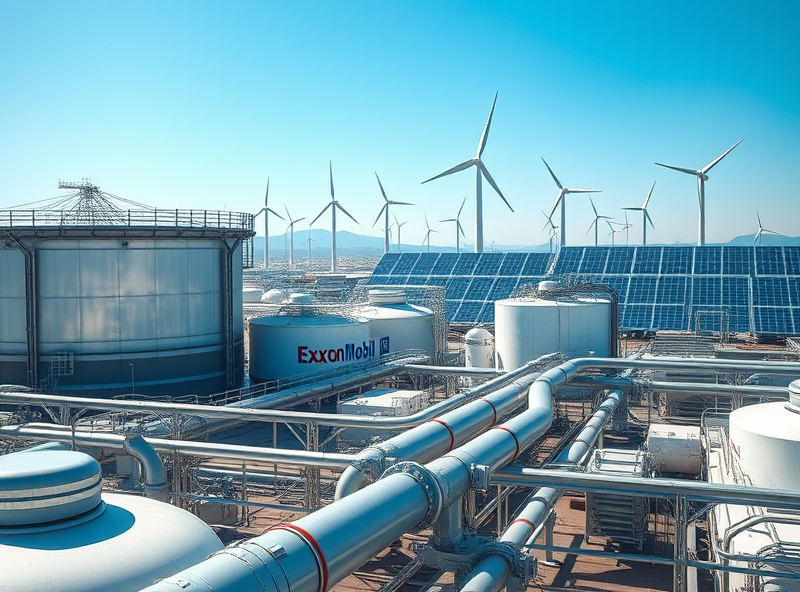
Is Investing in ExxonMobil (XOM) a Smart Move in 2025?
ExxonMobil Price Forecasts and Analyst Sentiment for 2025

As we look ahead to 2025, many investors are wondering whether ExxonMobil (XOM) remains a solid choice in the energy sector. With the global energy landscape evolving rapidly, it’s important to consider both price forecasts and expert sentiment to make informed decisions.
According to consensus estimates from leading financial analysts, ExxonMobil’s stock price is expected to show moderate growth in 2025. Analysts project a price range between $115 and $130 per share, depending on oil price stability, geopolitical factors, and ExxonMobil’s ability to maintain strong cash flows. The company’s disciplined capital spending and focus on high-return projects, especially in Guyana and the Permian Basin, are expected to support earnings growth.
Analyst sentiment remains cautiously optimistic. As of mid-2024, around 60% of analysts covering XOM rate it as a “Buy” or “Strong Buy,” while about 30% suggest “Hold.” This reflects confidence in ExxonMobil’s long-term fundamentals, especially its robust dividend yield and commitment to shareholder returns. However, some analysts express concerns about regulatory risks and the pace of transition to renewable energy.
Investors should also consider ExxonMobil’s strong balance sheet and its strategic investments in carbon capture and low-emission technologies, which may enhance its competitiveness in a decarbonizing world. While no investment is without risk, ExxonMobil’s blend of stability, innovation, and income potential makes it a compelling option for long-term portfolios.
For more detailed analyst ratings and price targets, you can refer to [Yahoo Finance’s ExxonMobil page](https://finance.yahoo.com/quote/XOM/analysis?p=XOM).
Recent Financial Performance and Market Reactions

ExxonMobil (XOM) has shown a resilient financial performance heading into 2025, despite a volatile energy market. In 2023 and 2024, the company posted strong earnings, driven by elevated oil prices and disciplined capital spending. For instance, in Q4 2023, ExxonMobil reported a net income of $7.63 billion, reflecting robust upstream operations and cost efficiency. This performance has bolstered investor confidence, with the stock maintaining relative stability even amid broader market uncertainties.
In terms of market reaction, analysts have responded positively to ExxonMobil’s strategic investments in low-carbon technologies and its commitment to shareholder returns through dividends and share buybacks. The company’s forward dividend yield remains attractive, often exceeding 3%, which appeals to income-focused investors. Additionally, ExxonMobil’s strong balance sheet and low debt-to-equity ratio provide a cushion against economic downturns.
However, investors should also consider the potential risks, such as regulatory pressures on fossil fuels and fluctuating commodity prices. While ExxonMobil is investing in carbon capture and hydrogen, the transition to a low-carbon economy could impact long-term profitability if not managed effectively.
Overall, ExxonMobil’s recent financial performance suggests a solid foundation for 2025, but prospective investors should balance optimism with a careful review of energy sector dynamics.
Source: https://investor.exxonmobil.com/
Strategic Developments: Energy Transition & Carbon Capture

As we look ahead to 2025, ExxonMobil’s strategic pivot toward energy transition and carbon capture technologies is drawing increased attention from investors. While traditionally known for its oil and gas operations, ExxonMobil is now positioning itself as a key player in the low-carbon future. This shift is not just about environmental responsibility—it’s also about long-term profitability and resilience in a changing energy landscape.
One of the most notable moves is ExxonMobil’s investment in carbon capture and storage (CCS). The company plans to spend over $17 billion through 2027 on lower-emission initiatives, with a significant portion allocated to CCS. This technology captures CO₂ emissions from industrial sources and stores them underground, preventing them from entering the atmosphere. ExxonMobil’s Baytown facility in Texas is already a flagship example, aiming to become one of the world’s largest CCS hubs.
Additionally, ExxonMobil is exploring hydrogen production and advanced biofuels, both of which are critical to decarbonizing hard-to-abate sectors like heavy industry and transportation. These developments align with global policy trends and investor demands for ESG (Environmental, Social, and Governance) accountability.
For investors, this means ExxonMobil is not only hedging against the volatility of oil markets but also tapping into new revenue streams. As governments worldwide implement stricter emissions regulations and carbon pricing, companies with scalable low-carbon solutions are likely to benefit.
While the energy transition is still in its early stages, ExxonMobil’s proactive strategy could make it a smart long-term investment, especially for those looking to balance traditional energy exposure with future-ready innovation.
Source: https://corporate.exxonmobil.com/news/newsroom/news-releases/2022/1201_exxonmobil-announces-plans-for-lower-emissions-investments
Risks and Opportunities Amidst Oil Price Volatility

ExxonMobil (XOM) remains one of the most prominent players in the global energy sector, and as we look toward 2025, potential investors are closely watching how oil price volatility might impact its performance. In a world still transitioning between fossil fuels and renewable energy, understanding the risks and opportunities surrounding oil price fluctuations is crucial for making a smart investment decision.
One of the key risks lies in the unpredictable nature of global oil prices. Factors such as geopolitical tensions, OPEC+ production decisions, and global economic growth can cause significant swings in oil prices. For example, a sudden slowdown in China’s economy or an unexpected supply surge from non-OPEC countries could drive prices down, directly impacting ExxonMobil’s revenue and profitability.
On the other hand, there are also compelling opportunities. ExxonMobil has a diversified portfolio that includes upstream, downstream, and chemical operations, which can help cushion the impact of oil price swings. Moreover, the company has been investing in carbon capture technologies and low-emission fuels, aligning with long-term sustainability trends that could unlock new revenue streams.
Investors should also consider ExxonMobil’s strong dividend history and disciplined capital spending. These factors can provide a degree of stability even in volatile markets. However, it’s essential to monitor regulatory developments and environmental policies, especially in the U.S. and EU, as stricter emissions rules could affect future operations.
In summary, while oil price volatility presents real risks, ExxonMobil’s scale, diversification, and strategic investments offer meaningful opportunities for long-term investors. A balanced approach that considers both macroeconomic factors and company fundamentals will be key to making an informed decision in 2025.
Source: U.S. Energy Information Administration (EIA) – https://www.eia.gov/







